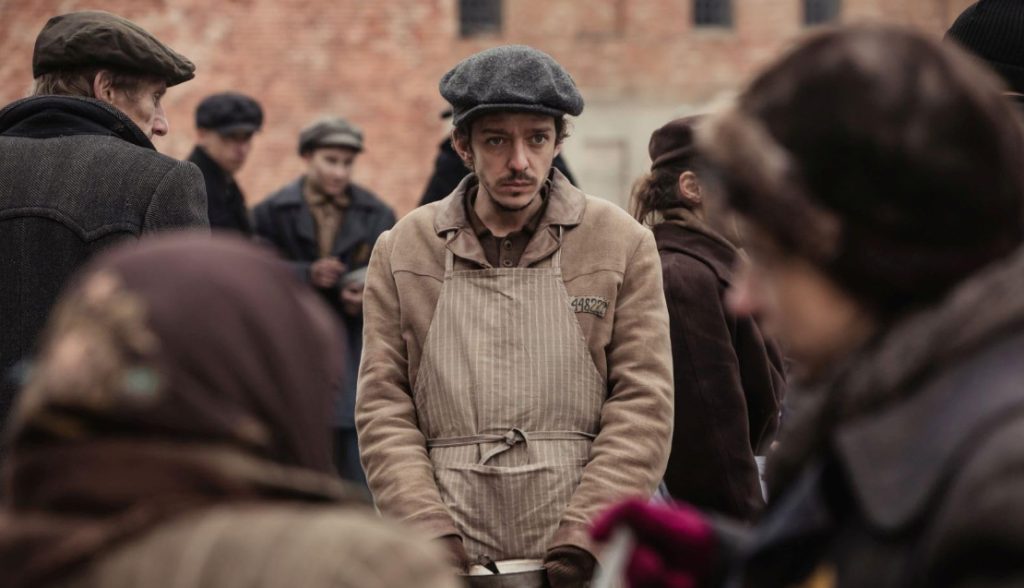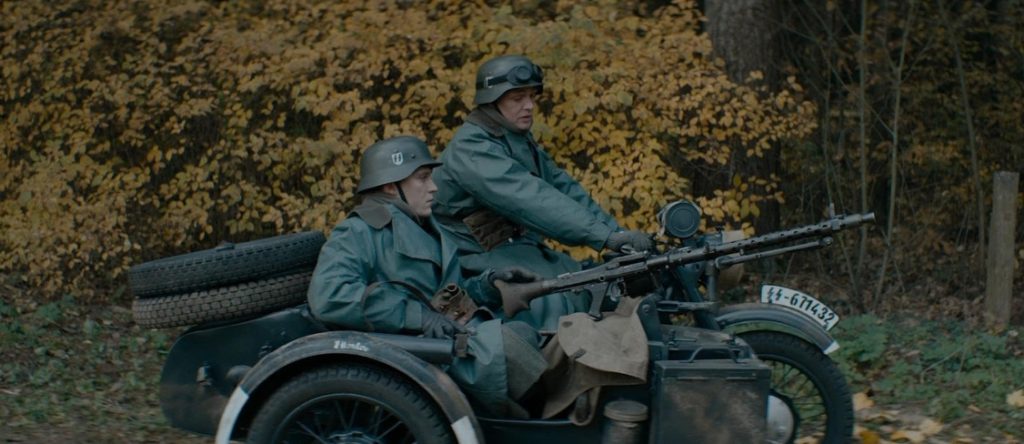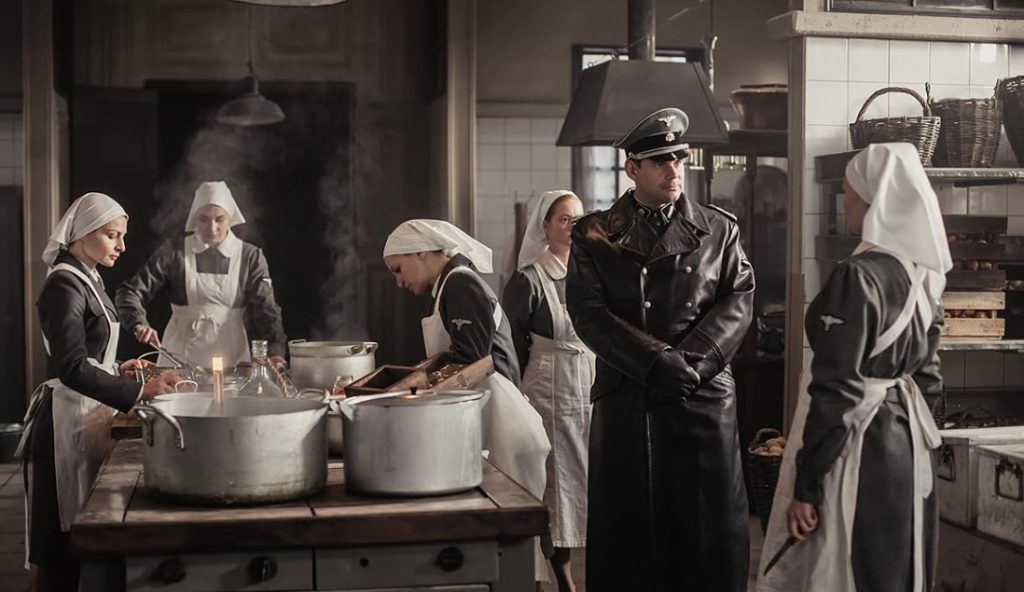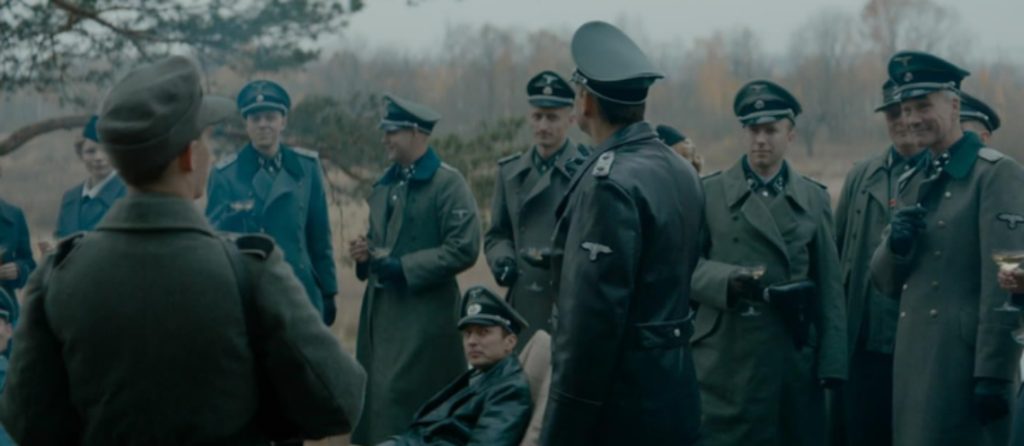Persian Lessons (2020)
I. PLOT OVERVIEW
Persian Lessons (2020) is a gripping, thought-provoking film set during World War II, focusing on a young Jewish man, Gilles (Nahuel Pérez Biscayart), who finds himself in a Nazi concentration camp. After being caught in a raid, Gilles narrowly avoids death by telling a bold lie: he claims to be Persian, a rare ethnicity that the Nazis don’t target with the same brutality as the Jews.
This lie saves his life, but it leads to an unforeseen complication. Gilles is forced to teach Rudi (Lars Eidinger), a German officer, how to speak Persian, despite not knowing a single word of the language. As the unlikely relationship between the two develops, Gilles must navigate a dangerous, morally complex game—balancing survival with the risk of exposure, while also struggling with the emotional toll of living in constant fear.
The heart of Persian Lessons lies in the tension between the human need for survival and the guilt of complicity. What begins as a survival tactic soon transforms into a profound and complicated relationship between the two men, one that explores identity, deception, and the power of language in a world where everything is in flux.
II. THEMES & EMOTIONAL DEPTH
At its core, Persian Lessons is a story about identity and survival. Gilles’ invention of a Persian heritage—something he has no connection to—forces him into a morally gray space, where truth and lies blur in the fight for life. This deception is not just about survival; it’s also about the psychological toll of keeping up a facade. The film masterfully portrays how trauma and survival instinct can lead people to make impossible choices, highlighting the immense emotional weight of living through war.

Another key theme is the power of language. The relationship between Gilles and Rudi is built on words—one man teaching a language he doesn’t know, the other learning it to feel closer to a culture he does not understand. This linguistic bond becomes both a tool for survival and a barrier that underscores the moral divide between the two men. Language is depicted as both a bridge and a wall, giving the story an added layer of complexity.

The film also deeply explores the psychological impact of war on both the oppressed and the oppressor. While Gilles’ plight is clear, the film does not shy away from showing Rudi’s internal conflict and struggle. Rudi is not portrayed as a simple villain, but as a man grappling with his own understanding of morality in a world turned upside down.
III. CHARACTER DEVELOPMENT AND PERFORMANCE
Nahuel Pérez Biscayart, known for his role in 120 Beats Per Minute, delivers a powerful and emotionally nuanced performance as Gilles. His portrayal of a man forced into a corner, who chooses deception as a means of survival, is deeply compelling. Biscayart perfectly captures the internal conflict of a man constantly balancing fear, guilt, and an overwhelming desire to live.
Lars Eidinger as Rudi is equally mesmerizing. His performance brings depth to a character who could easily have been one-dimensional. Rudi’s transformation throughout the film, from a Nazi officer to someone struggling with his humanity, is subtle yet powerful. Eidinger’s portrayal adds a complex layer to the story, making Rudi’s character as emotionally conflicted as Gilles.

The relationship between the two men is the emotional heart of the film, and the performances from both actors create an intense, layered dynamic. The tension between them evolves gradually, moving from suspicion and manipulation to something far more ambiguous and emotionally charged.
IV. CINEMATOGRAPHY & DIRECTION
Director Vadim Perelman brings a nuanced, intimate touch to Persian Lessons. The film’s pacing is deliberate, allowing the emotional depth of the characters and the weight of their choices to unfold slowly. Perelman’s direction uses long takes and tight close-ups to draw the audience into the characters’ internal struggles. The claustrophobic environment of the concentration camp adds to the feeling of isolation, heightening the emotional stakes.

The cinematography is subtle but striking, with muted colors reflecting the bleakness of the setting and the characters’ emotional states. The cinematographic choices emphasize the tension between the external horrors of the war and the intimate, personal battle between Gilles and Rudi.
The film’s use of silence and sound also plays a crucial role in building tension. The quiet moments between the characters, filled with the weight of unspoken words, are just as powerful as the more overtly dramatic scenes.
V. FINAL VERDICT
Persian Lessons is a film that transcends traditional war cinema. While set against the backdrop of World War II and the Holocaust, it focuses on the personal, emotional journey of its characters rather than the grand historical context. It’s a film that confronts the moral complexities of survival and deception, highlighting how language, identity, and relationships can evolve in even the darkest of times.
The performances from Nahuel Pérez Biscayart and Lars Eidinger are unforgettable, and the film’s thematic depth will linger long after the credits roll. Persian Lessons is not just a survival story—it’s a meditation on how even the smallest acts of kindness, communication, and understanding can change the course of a person’s fate in a world that has lost its way.
Rating: 8.5/10
A poignant, haunting film that balances psychological depth with historical drama, Persian Lessons is a compelling exploration of survival, identity, and the human capacity for connection.
